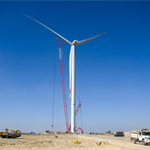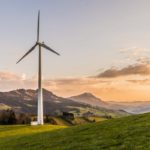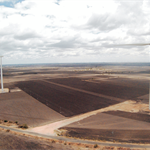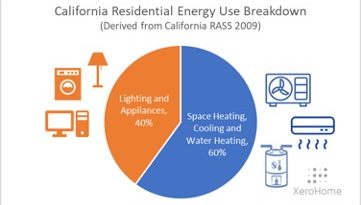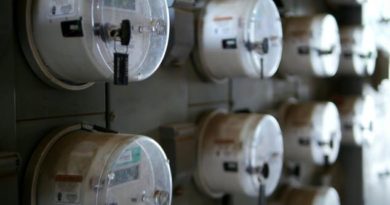As the climate warms, electricity demand shows a regional shift – pv magazine USA
Energy Disrupter
EIA data show home energy use patterns are shifting due to climate change, as milder winters and more extreme summer heat drive demand.
August 9, 2021
Even though American spent more time at home in 2020 during the Covid-19 pandemic lockdown, retail residential sales of electricity per capita rose by only 1% per person, year-on-year from 2019 to 2020, said the Energy Department’s Energy Information Administration (EIA). The agency said that warmer weather in 2020, especially a particularly mild winter, increased electricity usage from air conditioning, but cut U.S. electricity usage for space heating during colder months.
EIA reported that from 1960 to 2010, per capita U.S. electricity use posted a 3% average annual increase. That trend slowed over the past decade due to warmer weather and energy efficiency upgrades. Since 2010, per capita residential electricity use has fallen 5% in the U.S.. That means 2020 represented an uptick in demand relative to the broader trend.
Use varied widely from state to state, with people in Hawaii using the least power at 2,018 kWh per capita. People in Louisiana used about 6,663 kWh per capita in 2020, said EIA.
 Weather is often the biggest indicator of home electricity use. During the summer, air conditioning use, fans, dehumidifiers, and pool pumps, among other devices draw a significant amount of power. Rising temperatures due to climate change also are boosting the amount of power Americans are using to keep their homes cool.
Weather is often the biggest indicator of home electricity use. During the summer, air conditioning use, fans, dehumidifiers, and pool pumps, among other devices draw a significant amount of power. Rising temperatures due to climate change also are boosting the amount of power Americans are using to keep their homes cool.
According to the U.S. Census Bureau, roughly 39% of homes use electricity as their primary heating fuel. That percentage grows as homeowners look to electrify their homes and add ductless mini splits (heat pumps) to their homes.
 In 2020, per capita energy needs decreased the most in southern states where consumers use electricity as their main heat source. Milder winters required less electricity, EIA said. Arkansas ranked at the top of the list in demand reduction, using 4% less energy in 2020 than 2019, per EIA.
In 2020, per capita energy needs decreased the most in southern states where consumers use electricity as their main heat source. Milder winters required less electricity, EIA said. Arkansas ranked at the top of the list in demand reduction, using 4% less energy in 2020 than 2019, per EIA.
It was a different story in the West. States experienced their warmest summer on record in 2020, according to the National Oceanic and Atmospheric Administration. Arizona’s per capita residential energy use increased by 10% in 2020, followed by California, Nevada, and Alaska at 9% each.
Enter solar + storage
Climate change has made it clear that residential energy needs are going to change, and often unpredictably. This presents challenges for both homeowners looking to pay their bills, and grid operators planning for a reliable energy mix in the future.
A solution that addresses the problem from multiple angles is residential solar, especially when paired with energy storage. Residential solar contracts allow homeowners to secure a long-term energy rate, providing clarity in an uncertain future.
When energy storage is paired with home solar, stability can increase. Batteries often come coupled with smart technologies that allow homeowners to use their solar generation more intelligently, storing energy for use on peak demand hours and reducing strain on the grid. These batteries can often be reprogrammed to charge and discharge based on the current utility rate structure, giving homeowners greater flexibility and control over their rates.
The changing climate is producing powerful storms, wildfires, and unpredictable events that can increase power outages and leave homeowners in the dark. Energy storage can provide backup power at home in these critical events that are expected to become more frequent.
Plus, residential solar and storage help reduce energy-related CO2 emissions, which fuel climate change. The path to net zero emissions is going to be a global challenge that requires efforts on multiple fronts, said a report by Princeton, and home solar is one way U.S. residents can exercise choice and play a part in this effort.
This content is protected by copyright and may not be reused. If you want to cooperate with us and would like to reuse some of our content, please contact: editors@pv-magazine.com.
Original Source: https://pv-magazine-usa.com/2021/08/09/as-the-climate-warms-electricity-demand-shows-a-regional-shift/





